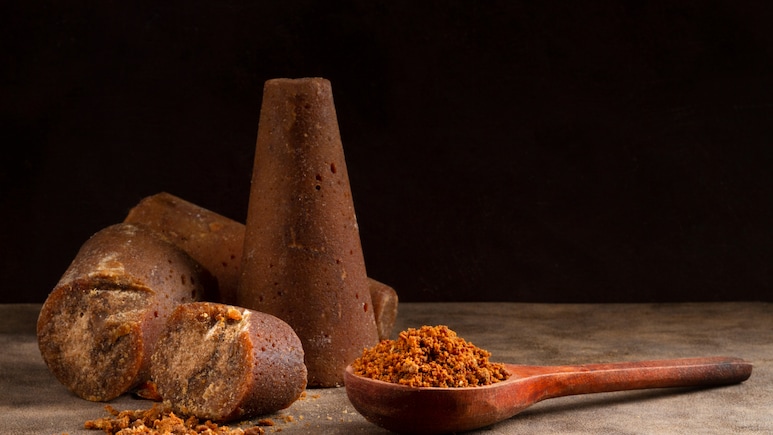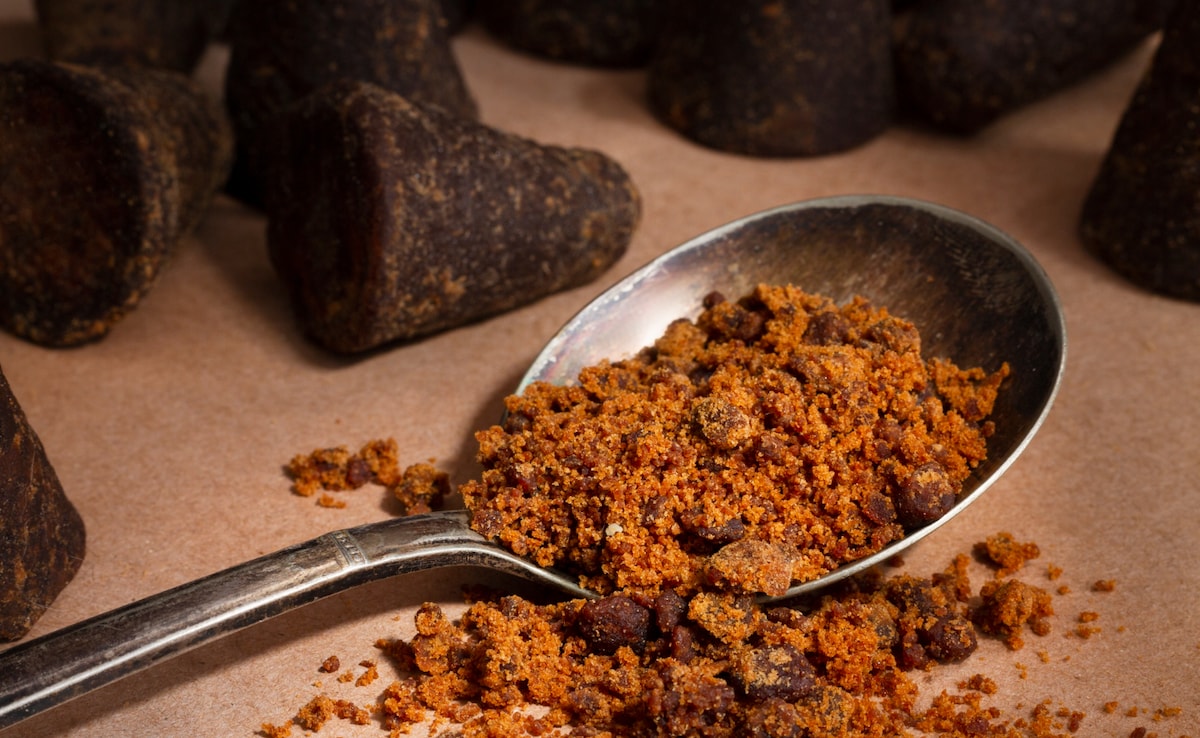
Few ingredients enjoy the cultural and seasonal nostalgia that jaggery does in India. From gur ki roti in Punjab to til-gur laddoos in Maharashtra, jaggery has been part of traditional diets and Ayurvedic prescriptions for centuries. Unlike refined white sugar, it is unrefined and rich in molasses, giving it a distinctive taste and colour. But in recent years, jaggery has undergone a dramatic image makeover, thanks to wellness influencers on Instagram and YouTube. Videos glorify it as an immunity booster, detoxifier, and even a diabetic-friendly alternative to sugar.
So, is jaggery really the guilt-free sweetener it's made out to be? According to Dr Kruti S Dhirwani, a homeopathy physician and clinical nutritionist based out of Mumbai, the answer is more nuanced.
"Yes, our traditional gur is a healthier choice compared to refined white sugar, but it is not a 'health food' in itself," she explains. "Jaggery is unrefined, which means it retains small amounts of beneficial minerals like iron and magnesium that are stripped from white sugar. This is why Ayurveda and our ancestors have long praised it for aiding digestion and acting as a blood cleanser."
But, she says, there's a caveat most people today aren't aware of. "The current social media hype often misses a crucial point: jaggery is still about 95% sucrose. Its mineral content is too low to offset the fact that you are consuming a large amount of sugar. While it's a better substitute for white sugar, the extravagant health claims are largely exaggerated," Dr Dhirwani opines. "Think of it as a slightly more nutritious sweetener, not a guilt-free superfood."
How Is Jaggery Made?
Jaggery is traditionally produced by boiling sugarcane juice (and in some regions, date palm sap or coconut sap) in large iron vessels until it thickens. The syrup is then cooled and solidified into blocks, balls, or powdered forms. Unlike refined sugar, which undergoes centrifuging and bleaching, jaggery is minimally processed, retaining molasses and some micronutrients like iron, magnesium, potassium, and small amounts of B vitamins.
India is one of the largest producers of jaggery, with Uttar Pradesh, Maharashtra, and Karnataka being major hubs.
Nutritional Profile Of Jaggery
According to the USDA Food Database and National Institute of Nutrition (ICMR), here are some nutritional facts you should know about gur or jaggery:
- Calories: Around 383 kcal per 100 g (similar to sugar)
- Carbohydrates: Approximately 98 g (mostly sucrose, glucose, fructose)
- Protein & Fat: Negligible
- Micronutrients: Small amounts of iron, magnesium, potassium, manganese, and antioxidants from molasses content.
- Key takeaway: Jaggery does have more nutrients than white sugar, but the amounts are tiny compared to daily requirements. You would need to eat unhealthy quantities of jaggery to meet your iron or potassium needs.
Can Diabetics Safely Eat Jaggery?
One of the most persistent myths is that jaggery is safe sugar for diabetics. Dr Dhirwani warns against this misconception.
"The answer is an emphatic no," she states. "This is one of the most common and dangerous health myths in India. The reason is simple: jaggery has a very high Glycaemic Index (GI) of around 84, which means it raises blood sugar levels just as fast, if not faster, than white sugar. This means that consuming jaggery can lead to a rapid and significant spike in blood glucose, which can be dangerous for diabetics. While jaggery does contain some beneficial nutrients, the amount is too small to counteract the negative impact of its high sugar content on blood glucose control. It is a myth that can seriously compromise blood sugar control."
In short, diabetics should avoid jaggery as strictly as they avoid refined sugar.

Photo Credit: Freepik
The Problem Of Adulteration: Gur Quality Matters
With jaggery becoming a trendy health food, demand has soared. This, unfortunately, has also led to rampant adulteration in the market. Dr Dhirwani lists the common adulterants and simple home tests:
- Chalk Powder: Added to increase weight, it can be identified by dissolving a small piece of jaggery in a glass of water. If a white sediment settles at the bottom, the jaggery is likely adulterated with chalk.
- Washing Soda: This is sometimes added to give jaggery a lighter colour. To test for it, add a few drops of lemon juice or vinegar to a small piece of jaggery. If it fizzes, it indicates the presence of washing soda.
- Crystals in jaggery indicate added refined sugar.
- Artificial Colourants (like Metanil Yellow): Unadulterated jaggery typically has a dark brown colour. A very bright, golden-yellow hue can be a sign of added chemical colours, which can be harmful to your health. Pure jaggery also has a rich, earthy, and caramel-like aroma and taste. A chemical or bitter taste is a clear red flag.
"When in doubt, it is always advisable to purchase jaggery from trusted and reputable sources," Dr Dhirwani says.
How Much Jaggery Is Safe To Eat?
Even if you're not diabetic, jaggery should be consumed in moderation. "According to the latest ICMR-NIN guidelines, the recommended limit for daily jaggery and other added sugars for adults is 20-25 grams, which equals roughly five teaspoons per day," Dr Dhirwani suggests. "This covers all forms of added sugar, including jaggery, white sugar, honey, and syrups. For children and people with diabetes, daily jaggery intake should be significantly lower; ideally, zero for children under 2 years and those with diabetes. Jaggery adds calories but no significant nutritive value, and therefore, jaggery should be consumed in moderation as an occasional sweetener, not as a health supplement."
Jaggery has a rightful place in Indian kitchens, it is less processed than sugar, contains trace minerals, and carries cultural and culinary importance. But as Dr Dhirwani emphasises, it is not a miracle food. Yes, a piece of jaggery after a meal can aid digestion, and yes, it is a slightly better choice than refined sugar. But it remains a form of sugar, calorie-dense and capable of spiking blood glucose. For diabetics, it is unsafe; for the rest of us, moderation is key.
So, enjoy your gur ki roti or winter til laddoo, but remember: jaggery is not a superfood. It's simply a less-processed sugar, nothing more, nothing less.
Disclaimer: This content including advice provides generic information only. It is in no way a substitute for a qualified medical opinion. Always consult a specialist or your own doctor for more information. NDTV does not claim responsibility for this information.
Track Latest News Live on NDTV.com and get news updates from India and around the world

